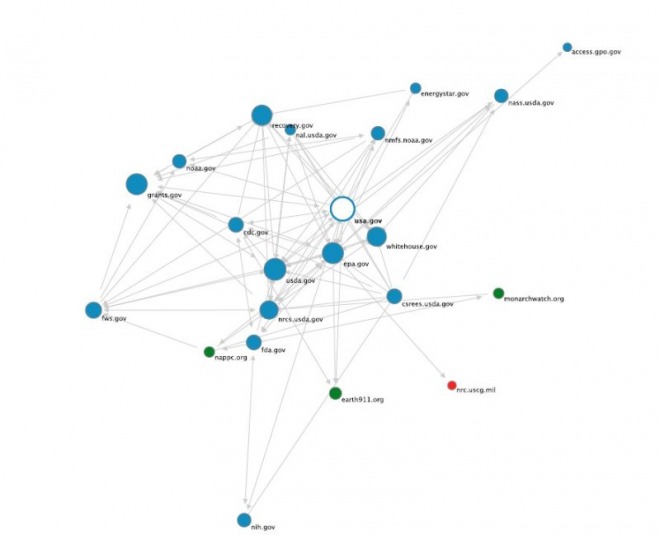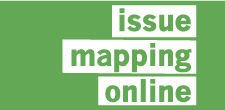Locating Issue Networks
Recipe: Locating Issue Networks
Classically, an issue network is defined as a network of experts and professionals that define issues by sharing information about it (Heclo, 2005; Marres, 2007; Marres and Rogers, 2005). On the Web, an issue-network takes the form of a set of current Web pages connected into a topical network. Using the tool Issue Crawler, we can deploy hyperlink analysis to locate such topical assemblages on the Web. Online Issue networks can be analysed in various ways. They can be used for issue detection: is a given topic an active, current issue? Issue networks can be analysed in terms of actor composition (which actors and sectors are (more and less) prominent?). Tracking issue networks over time, one can follow the configuration and re-configuration of an issue space, say the US Democratic Elections. Issue Network Mapping can also be used in combination with other techniques: It can be used to delineate a set of urls – sourceset – for further analysis (eg to analyse issue resonance: what are resonant terms in this issue area?). It can also be used to analyse different data sets, such as a Twitter corpus (which URLs associated with specific issue terms, eg hashtags).
Mapping issue networks with Issue Crawler
1 |
Select Starting Points Select a set of URLs that can disclose the issue by way of hyperlinks. These are web pages that are issue-specific (they deal with your particular topic), active (they have recently been updated) and have external links. Its important to decide on a clear rationale for starting point selection: why these actors, why these pages?If they are biased towards a particular sector (ngos, media) or camp (pro or con the issue), is this deliberate? | |
2 |
Decide Issue Crawler Settings Different Issue Crawlersettings are useful for locating different types of networks: Are you trying to locate an establishment network or are you after a network with maximum issue-specificity? Do you want to map the broader issue area or context, or do you want to determine the centrality of a particular event to the issue network? Depending on this, you would either go for more inclusive or more restrictive settings, more breath or more depth. Different settings are more or less suitable depending on the hyperlink patterns you are working with: if your issue area has significant online presence, more restrictive, demanding settings are more feasible. Issue Crawler Instructions |  |
3 |
Issue Network Reading Your further analysis of the issue network strongly depends on your research design. Do you want to determine the actor-profile of your issue? the positions of a specific organisation? the currency of a particular document in the issue area, or compared with another? the geographic location and scope of your issue ? Issue Crawler has various features to support further research: the actor list and network data in Excell file; the xml file with all network data including data-stamps per page; the geo-locator, which plots your issue network onto an mercator map. |  |
